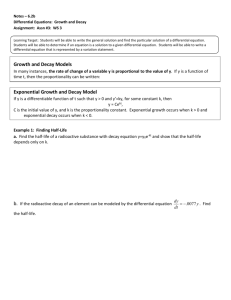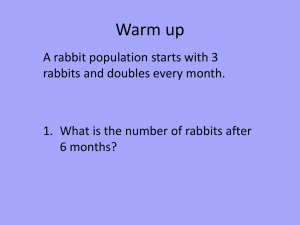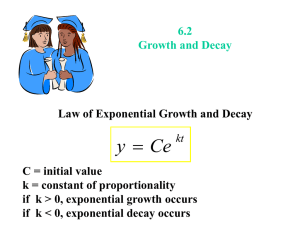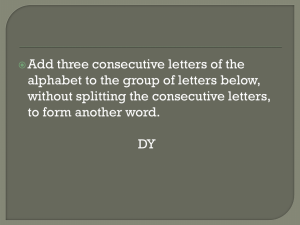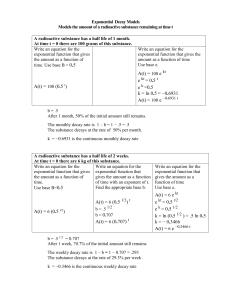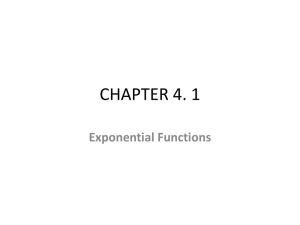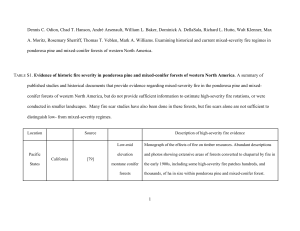Write and Graph Exponential Decay Functions Day 1 Exponential
advertisement
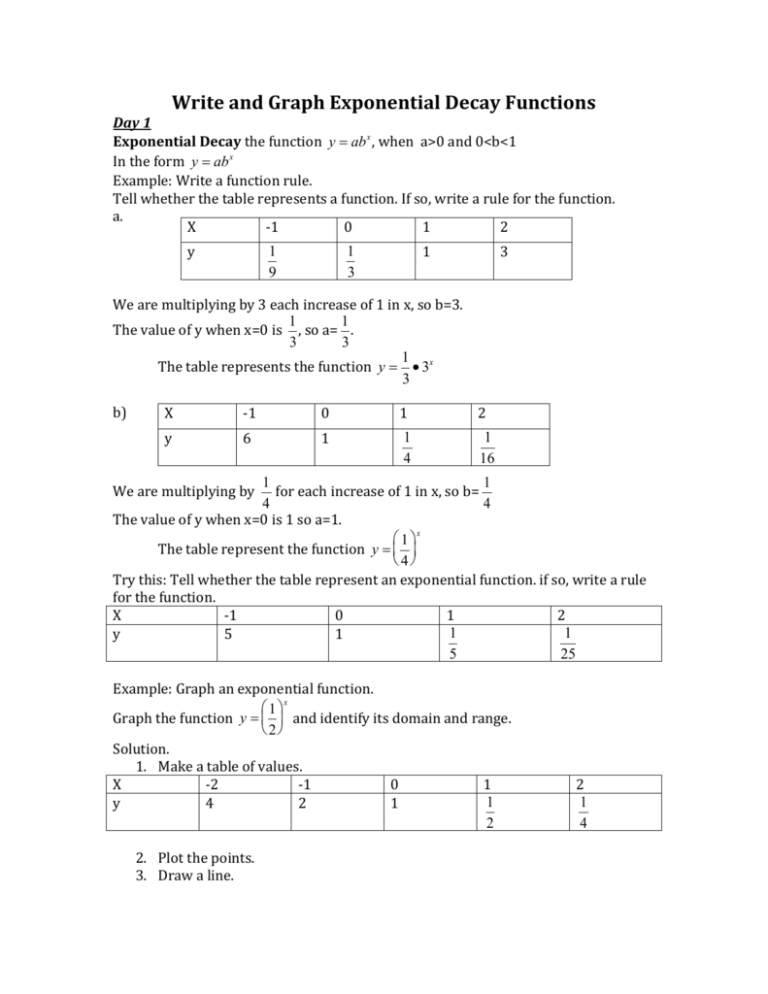
Write and Graph Exponential Decay Functions Day 1 Exponential Decay the function y ab x , when a>0 and 0<b<1 In the form y ab x Example: Write a function rule. Tell whether the table represents a function. If so, write a rule for the function. a. X -1 0 1 2 y 1 9 1 1 3 3 We are multiplying by 3 each increase of 1 in x, so b=3. 1 1 The value of y when x=0 is , so a= . 3 3 1 The table represents the function y 3x 3 b) X y -1 6 0 1 2 1 1 4 1 16 1 1 for each increase of 1 in x, so b= 4 4 The value of y when x=0 is 1 so a=1. 1 x The table represent the function y 4 Try this: Tell whether the table represent an exponential function. if so, write a rule for the function. X -1 0 1 2 1 1 y 5 1 5 25 We are multiplying by Example: Graph an exponential function. 1 x Graph the function y and identify its domain and range. 2 Solution. 1. Make a table of values. X -2 -1 0 1 1 y 4 2 1 2 2. Plot the points. 3. Draw a line. 2 1 4 Example: Compare graphs of exponential functions. x 1 x 1 1 Graph the functions y 3 and y . Compare each graph with the 2 3 2 x 1 graph of y . 2 Solution: 1. Make a table for the functions. x x 1 x 1 x 1 1 y y 3 y 2 2 3 2 3 -2 4 12 4 2 -1 2 6 3 1 0 1 3 3 1 3 1 1 2 2 6 1 3 1 2 4 4 12 2. Graph the functions on the same coordinate plane. 1 x 1 x The Graph of y 3 is a vertical stretch of the graph y . 2 2 x 1 1 The graph of y is a vertical shrink with reflection in the x-axis of the 3 2 x 1 graph y . 2 Try These: x Graph y 0.4 and identify its domain and range. Graph y 5 0.4 . Compare the graph with the graph of y 0.4 . x x Day 2 Example: Classify and Write Rules for Functions Tell whether the graph represents exponential growth or exponential decay. Then write a rule for the function. a. Graph a represents an exponential growth. The y-intercept is 10, so a=10. Find the value of b by using the point (1,12) and a=10. y ab x 12 10 b1 1.2 b The function rule is y 10(1.2) x b. Graph b represents an exponential decay. The y-intercept is 8, so a=8. Find the value of b by using the point (1,4) and a=8. y ab x 4 8 b1 0.5 b The function rule is y 8(0.5) x Try This: The graph of an exponential function passes through the points (0,10) and (1,8). Graph the function. tell whether the graph represents exponential growth or exponential decay. Write a rule for the function. Exponential Decay Model y a(1 r) t a= initial amount 1-r=the decay factor r= decay rate t= time period Example: The number of acres of Ponderosa pine forests decreased in the western United States from 1963 to 2002 by 0.5% annually. In 1963 there were about 41 million acres of Ponderosa pine forests. a) Write a function that models the number of acres of Ponderosa pine forests in the western United States over time. Let y be the number of acres (in millions), and let t be the time (in years) since 1963. The initial value is 41, and the decay rate is 0.005. y a(1 r) t y 41(1 0.005) t y 41(0.995) x b) To the nearest tenth, about how many million acres of Ponderosa pine forests were there in 2002? To find the number of acres in 2002, 39 years after 1963, substitute 39 for t. y 41(0.995) 39 33.7 There were about 33.7 million acres of Ponderosa pine forests in 2002. Try this: Suppose the decay rate of the forests remains the same beyond 2002. About how many acres will be left in 2010?



